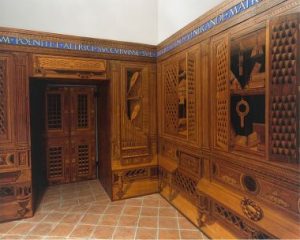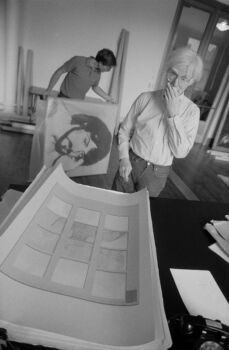The Workshop was the center of Renaissance artistic production and the embryo for the birth of the study-room, as it’s known today. From Titian to Leonardo, praised artworks as “The Last Supper” would not be conceived without long-term studies and experiments in the Studio of the “bottega”.

Image source: https://commons.wikimedia.org/wiki/File:Saint_Jerome_in_His_Study_MET_MM1882.jpg
Master and Apprentice: the Importance of the Workshop
The model of our contemporary studio can be traced back to the famous Renaissance “bottega”, which means “workshop”. In fact, in observing a masterpiece from the Reinassance period, including such artists as Leonardo da Vinci or Botticelli, it is important to consider that these artworks include the training received by the workshop’s masters. These art centers were possible thanks to the private patrons, who supplanted the medieval dominion of the Church in art: before the Renaissance, artists worked for religious institutions. In this new era, artistic projects were commissioned by the patrons, who sometimes established masters’ workshops in or near their palaces.

The young promising artists were invited to join the most prestigious artists in their workshops. This apprenticeship was the first step of every Renaissance artist career: by attending a workshop it was possible to learn drawing, sculpture, and painting techniques. The artistic journey would last several years, beginning from the bottom (for example by cleaning brushes or preparing colors), until the apprentice could become the closest assistant to the master.
The Origin of the Studio
The artistic process was divided into two steps: in the first phase the project was designed by the master, then it was realized in the workroom. The mental labor was associated with drafting and modeling rather than the execution of the final work, and a new personal space, therefore, was a necessity. This contemplative room, opposed by the craft space, was a small room known as “studiolo”. The term initially identified a desk, and later by extension a site for investigation and reflections, for processing images and converting them into original compositions. While both were usually housed in the same building, the public workshop was located at the front of the house and the private studio toward the rear or located in the most remote part. The reason is that such a physical, isolated space helps to focus on “visual thinking”. Two perfect examples are the “Studioli” (which is the plural term for studiolo) of the Ducal Palace in Urbino and Gubbio, commissioned by Federico III da Montefeltro.

Image source: https://en.wikipedia.org/wiki/File:Studiolo_from_the_Ducal_Palace_in_Gubbio_MET_DT213911.jpg
The Birth of the Modern Studio
The studio has evolved through centuries of innovations. A pioneer of the modern studio was the master of the Pop Art Andy Warhol, who combined the artistic production with the model of Fordism and assembly line. Printed images could be repeated quickly: it was, indeed, the advent of the artist as a “brand”, and the studio was a workshop and a party space at the same time. Since then, the vision of that space has changed again. The most fitting example is Jeff Koons’s studio, with hundreds of specialists in each specific field, from computer graphics to painting, and a high turnover rate. Just as being an apprentice in a Renaissance bottega.

https://www.mutualart.com/Article/Inventions-of-the-Studio–Renaissance-to/EA78C33421B97A9C
https://www.theartpostblog.com/en/renaissance-artists-workshop/
